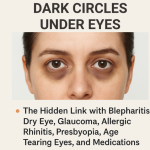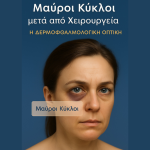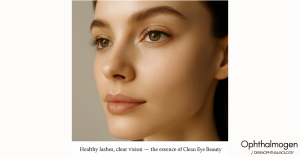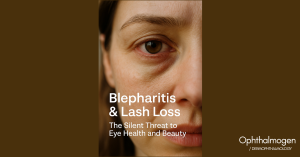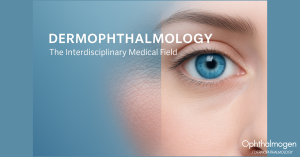
Introduction
LASIK is the most common refractive surgery worldwide, freeing millions from glasses and contact lenses.
Thanks to her, people were freed from glasses and contact lenses.
And it carries a Greek legacy:
Professor Ioannis Pallikaris, from the University of Crete, is internationally recognized as the “father of LASIK”. His innovation reshaped ophthalmology.
But there’s a hidden 50% of success often overlooked: eyelid hygiene.
The Link Between LASIK & Dry Eye
- LASIK cuts corneal nerves → reduced sensation & tear reflex.
- If dry eye or blepharitis already exist, symptoms become much worse.
- Studies show that up to 95% of patients experience some form of dry eye immediately after LASIK.
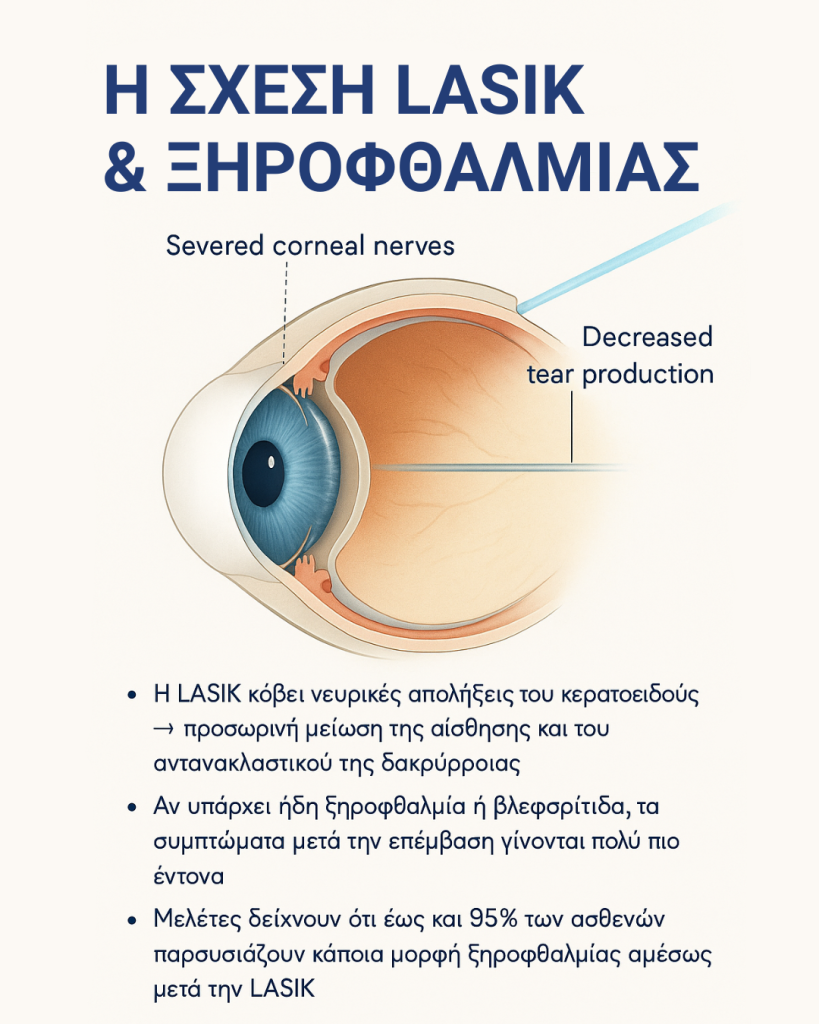
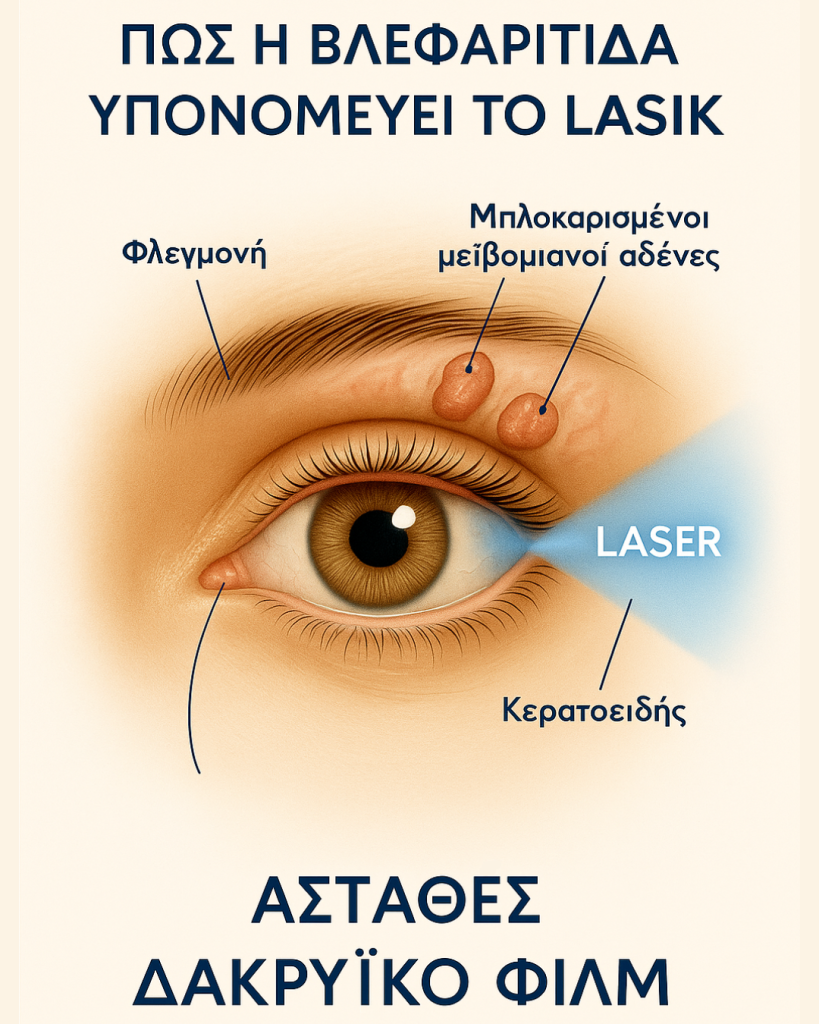
How Blepharitis Undermines LASIK
- Inflammation & blocked Meibomian Glands → unstable tear film.
- Laser on a “dry canvas”.
- Result: hazy vision, more discomfort, slower stabilization.
The Dermophthalmology Approach – The “Hidden” 50%
To optimize outcomes:
- Eyelid cleansing with Naviblef.
- Ophthalmogen Spray → control Demodex& bacteria.
- OphthalmogenGel massage → improves circulation & gland function.
- Artificial tears eye drop &spray form → stable tear film.
FAQ
- Is dry eye after LASIK;
Yes. But if blepharitis exists, it gets much worse.
- Can it be prevented?
Daily hygiene 2–3 weeks before LASIK reduces symptoms.
- Will dry eye go away?
It usually improves within 3–6 months. With proper hygiene, recovery is smoother.
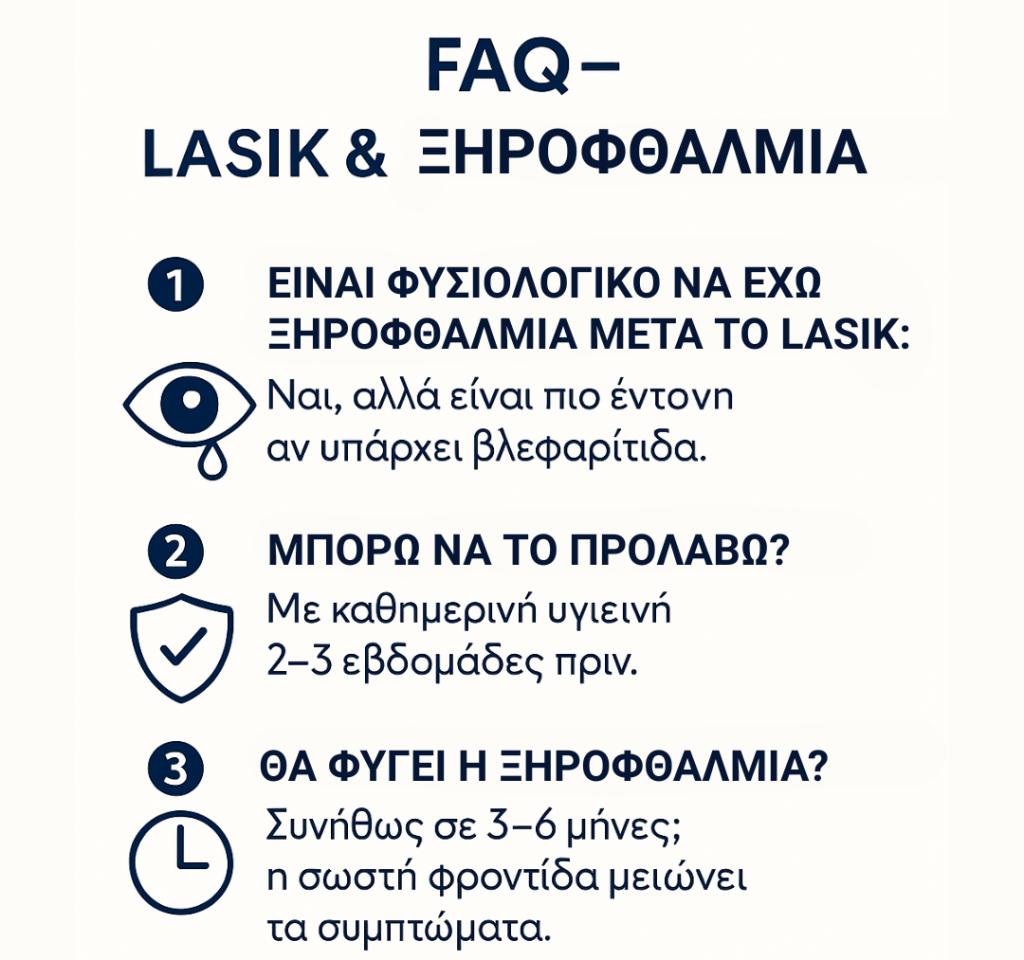
Conclusion
LASIK is a technological marvel with Greek origins.
But success isn’t just about the laser.
The hidden 50% is eyelid hygiene, ensuring clearer, more comfortable and stable vision.
Dermophthalmology is the new medical specialty we have introduced (learn more at www.dermophthalmology.com)
Note
LASIK is one of the safest and most effective surgical procedures in the history of medicine, continuing to provide visual freedom to millions of people worldwide. This analysis does not question the method or the work of pioneers such as Professor Ioannis Palikaris; on the contrary, it highlights a complementary factor – Dermophthalmologic hygiene – that can further enhance both the patient experience and the overall outcome.

